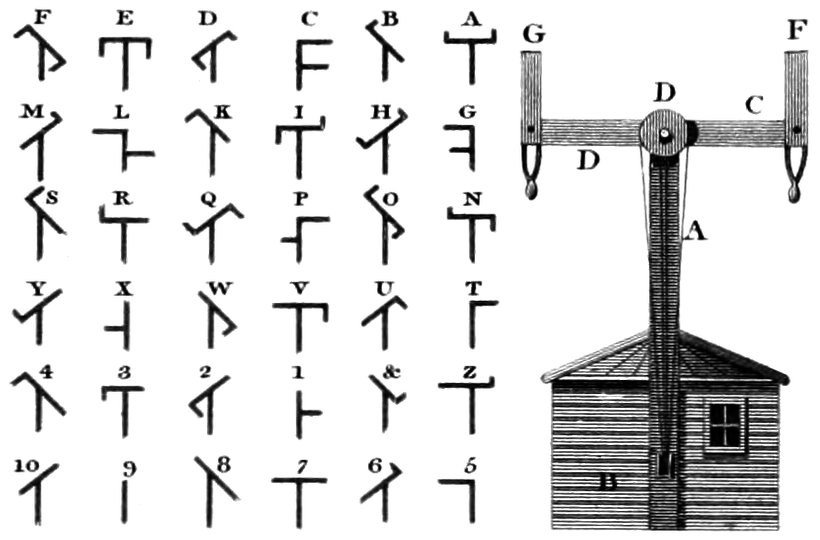Before it, Joel Mokyr says, “information could move no faster than a man on horseback.”
Mr. Mokyr is wrong. He needs to read "A Thread Across the Ocean."
During the Revolutionary and Napoleonic Wars communication systems were pretty basic, mainly relying upon mounted despatch riders, although in 1793 a Frenchman came up with a suggestion that would transform long-distance communications.
Claude Chappe's semaphore telegraph took quite some time to be accepted by revolutionary officials, but once the teething problems had been ironed out it was rapidly adopted. By 1794 communications towers within line-of-sight of each other allowed the French to send a signal from Paris to Lille - a distance of some 191 kilometres - in five minutes. The success of the system meant new tower lines were constructed reaching out from Paris to Dunkirk, Brussels, Boulogne, Antwerp, Metz, Lyon, Milan, Venice and Mantua. A message could be sent to Venice in six hours!
Chappe's telegraph was a small tower upon which stood a black 9-metre mast with a moving wooden cross-piece, measuring 30cm by 4.5 metres. This regulator, as it was known, had a 1.8 metre indicator at each end and had four basic positions - horizontal, vertical or at 45-degree angles. When not in operation the indicators were left as horizontal extensions of the regulator and these would then be moved in seven combinations of angles at 45-degree tilts.
All up the Chappe semaphore tower had 196 combinations known as signs and would be worked by a series of pulleys and levers. Under a good operator three signs could be sent in a minute - providing the visibility was good - although turning the signs into code would further speed a message's journey.
The French spent some time trying to develop a wagon-mounted version of the Chappe system, but funding for research was limited.




/guglielmo-marconi--1874-1937---italian-physicist-and-radio-pioneer-654313946-5baa7d23c9e77c002c954e55.jpg)